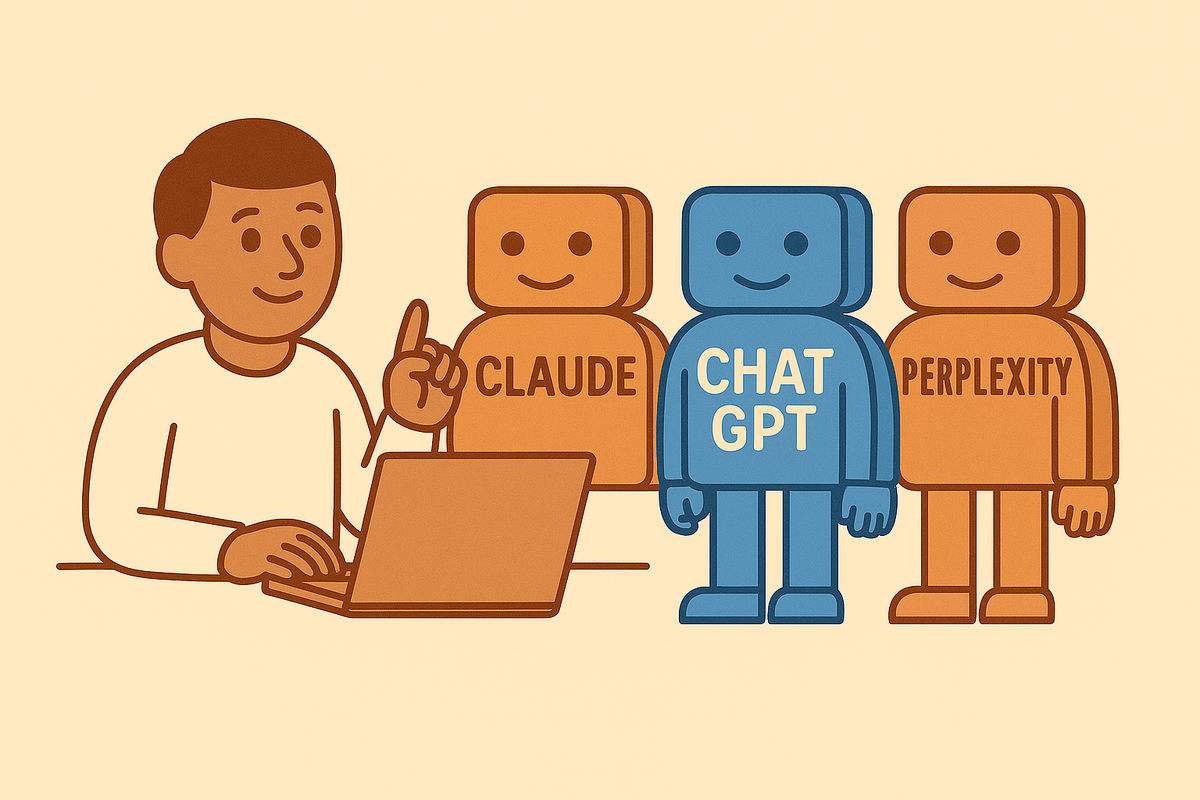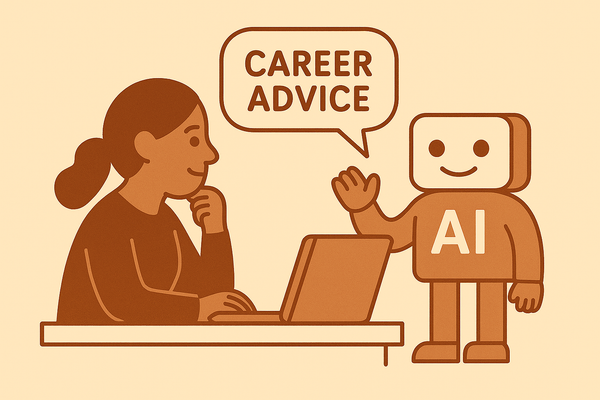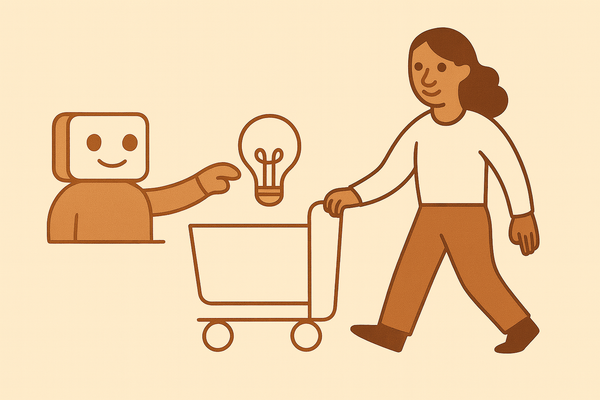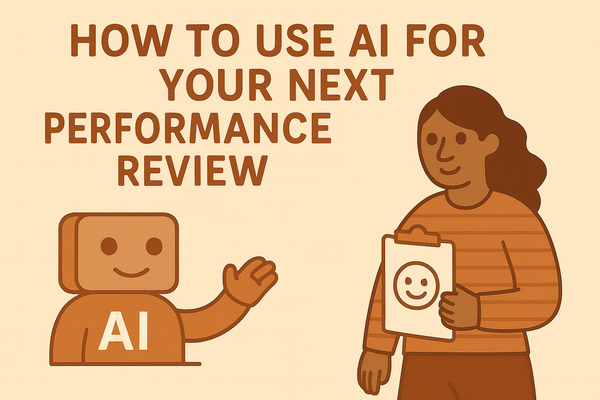How I Use The Big Three AI Tools

I ran a workshop for an HR team last week. Asked how many folks had used Perplexity or Claude.
One hand went up. Out of about 50 people.
That surprised me. I've been mentioning Perplexity here in recent posts, and I realized I should maybe take a step back and share more about how I use all three of the major AI tools day-to-day.
Maybe it'll help you figure out what works for your own workflow.
How I Think About Each Tool
After using all three daily for years:
- Perplexity is my go-to for search
- Claude is my daily driver for most of my work
- ChatGPT is my reasoning and visual creation tool
Perplexity: My Go-To for Searching Everything
I don't remember the last time I Googled something. Perplexity is a direct replacement for Google, but it does a whole lot more.
Last week I was preparing for a sales call and used Perplexity to give me an overview of the company I was about to meet with. Not only did it search like Google does, but it found multiple results, brought them all back in an aggregated way, and I could continue to chat with it for follow-ups just like ChatGPT or Claude. It found their LinkedIn, multiple articles about the company, recent news - everything I needed in one place.
That's why it's powerful.
I use Perplexity when I need:
- Current information about companies or trends
- Citations I can verify and include in presentations
- Fact-checking before meetings
But here's what makes Perplexity special: you can search specific sites and aggregate results. Simple example: "Can you compare these two tools and tell me what users think based off of Reddit." Perplexity will search Reddit specifically, find relevant discussions, and give you a summary of what people are actually saying instead of just marketing speak.
You can get even more specific. Want to search 10-Ks? Academic papers? News from the last week? Perplexity has that flexibility. It's not just a Google replacement - it's better because it synthesizes everything for you.
Claude: Where I Do My Deep Work
Claude is where I spend most of my time. I write this newsletter in Claude. I write code in Claude. When I need to think through something complex, I turn to Claude.
The Projects feature has become essential for my day to day. Think of Projects as contained folders where multiple chats can share a knowledge base. I have a project for each class I'm taking, so I can add notes and different chats throughout the semester. I have projects for all my consulting engagements. Different clients get their own folder. If I'm preparing for a speaking engagement and researching a topic, I'll start a project for that.
Everything in that project - all the documents, context, previous conversations - becomes shared knowledge. When I start a new chat in my newsletter project, it already knows my writing style, past articles, and what I'm working on.
For those interested in more technical stuff: I've been using MCPs (Model Context Protocol) with Claude Code and their Desktop app. MCP is a standard way to give chat models access to your tools. If you've seen those integrations where you can connect Notion, Google Drive, or Google Calendar to Claude or ChatGPT - that's all through MCP. It was a big deal because it made connecting tools easy. I use this heavily for pulling in data from different sources while I work.
I reach for Claude when I'm:
- Writing anything important or long form
- Building client and side AI projects
- Thinking through strategic decisions business/life decisions
ChatGPT: Reasoning and Visual Creation
All these AI tools have different underlying models that act differently and have different strengths. You might have seen ChatGPT just came out with a new flagship model this week, GPT-5.
What makes ChatGPT different is its reasoning model. This basically means you can give it a lot of detail and have it do multiple complex steps in one go, versus other models that are more chat-based or focused on single responses. It's built for deep thinking through problems.
It's also the only one of these three that can generate images. It handles large amounts of information well too - it has a huge context window, which is how much information the AI can hold in its "memory" during a conversation. Think of it like RAM for AI.
For example, in school I'm reading through case studies that are 100+ pages. That would hit message or token limits in Claude, but it works well in ChatGPT. The closest way to think about tokens without getting too technical is that they're basically a mix of the number of words and characters.
My typical ChatGPT uses:
- Complex multi-step reasoning tasks
- Working with long documents or multiple files
- Generating images
How They Work Together
For me, these tools complement each other.
When I'm writing an article about a new trend in AI:
- I'll start in Perplexity to search for what people are saying, what's been published recently, and gather sources.
- I'll then move to Claude with all those search results and put it in the newsletter project. It then helps me structure and write the actual piece.
- Lastly every one of these newsletter articles has a custom AI-generated image - that's all using ChatGPT.
The more you use each tool, the more you'll start to realize the little nuances and what to keep in mind with their different behaviors.
What This Means for You
You definitely don't need to use all three tools. But I do think getting good at one of Claude or ChatGPT combined with Perplexity will take you a long way.
Start with one based on what you do most. You can always add others as you find specific needs.
The workshop I mentioned at the beginning? When I showed that HR team what Perplexity could do for their search tasks, several people said they'd been making their work harder than necessary.
We don't know what we don't know.
Moving Forward
The goal isn't to use all the AI tools. It's to use the right tool for what you're trying to accomplish. The future of AI isn't just about having to use AI for complex topics, it's about being open minded to how it can help you do the little things you are already doing.
Everyone's workflow is different. What works for me might not be what works for you.




